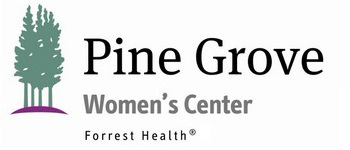Self-Harm in Young Professionals
When individuals become overwhelmed, whether by mood disorders or the stressors of daily life, they may attempt to cope in destructive ways. For some, this means engaging in self-harm. This practice is defined as purposefully, not accidentally, injuring one’s body, and may take several forms:
- Cutting, deeply scratching, piercing or burning the skin
- Punching or hitting themselves
- Poisoning themselves with various substances
- Picking at scabs, wounds
- Pulling out hair
Self-harm is more common than most people realize, especially among younger individuals. It can be brought on by social issues, trauma, stress, or psychological causes (such as depression, anxiety, dissociation, or borderline personality disorder).
When these issues aggregate and are pent up, some people may believe that self-harming is their only way to “release” their negative feelings and tension. Others may claim that it makes them feel “more in control” of their bodies and minds. Still others may view the experience as self-punishment for transgressions real or imagined.
Regardless of the perception, self-harm is an incredibly addictive and destructive habit for young people worldwide.
Self-Harm and Young Professionals
While most people may associate these activities with adolescents, it has also become increasingly common among the a slightly older population. One recent study showed that one in three young adults have self-harmed.
These individuals are often young college graduates working high-pressure jobs. The constant hustle required in their lifestyle, from early mornings in the office to late nights working at home, combines with personal issues and mental illness to create a seemingly overwhelming torrent of emotions.
Stress and depression are major factors in self-harm – sufferers may feel that this “safety valve” is their only way to find a respite from their issues. Unfortunately, continuing to cut or burn one’s self only serves to worsen self-esteem and self-concept over time. For this reason, it is vital to identify symptoms of self-harm as soon as possible.
Signs of Self-Harm
Because of the shame associated with self-harm, people often try to keep it a secret. For example, those who are cutting themselves or otherwise marking their skin will probably wear long sleeves to cover their arms. It’s also possible to find paraphernalia associated with self-harm in their rooms or apartments.
Signs of self-harm include:
- Unexplained cuts, bruises, or burns (usually on the wrists, arms, chest, and thighs), often in patterns
- Pulling out hair
- Blood stains on clothing, sheets, towels
- Wearing clothing that covers them completely, even in hot weather or inappropriate settings
- Low mood, tearfulness, lack of motivation, inability to feel joy (anhedonia)
- Self-loathing
- Expressing a wish to punish themselves
- Not wanting to go on
- Social isolation – withdrawing from others
- Low self-esteem
- Blaming themselves for any problems
- Expressing that they are not good enough
- Finding implements that may have been used to self-harm
How to Intervene
It is incredibly scary to realize that your loved one has been hurting themselves for any length of time. Perhaps the most common question in this situation is, “My child has self-harmed, what do I do?” Luckily, there is a clear path to intervention and treatment available.
If you notice any of these behaviors over any amount of time, it’s important to take action. While self-harm isn’t necessarily an indicator of suicidal ideation, it is a sign that your loved one is struggling to cope with aspects of their lives.
Above all else, try to avoid making accusations or lashing out at your child about their self-harm. While this confrontation will be an emotional experience, it is vital that you approach the topic gently by stating your desire to help. Avoid asking “why?” because it is possible that the young adult in your life may not fully understand why they are acting this way. By speaking openly and honestly with your child about what you have observed, you can begin to convince them to seek treatment at a credentialed facility.
Self-Harm Treatment
Pine Grove Behavioral Health & Addiction Services offers a wide variety of specialized programs, tailored to individual needs, history, and diagnoses. Through a fully comprehensive approach, our team of experts will work with your loved one to resolve the internal issues driving their self-harm, including mental illness, substance use, and complex trauma. To learn more about our treatment options, call 1-888-574-4673.







